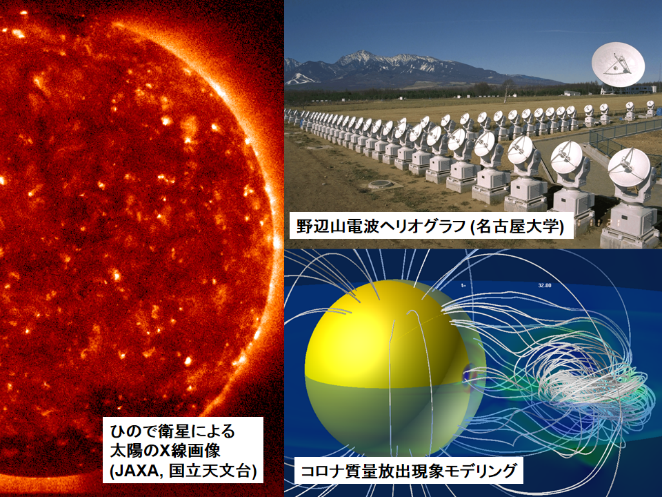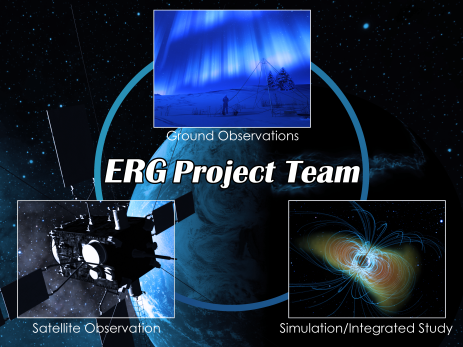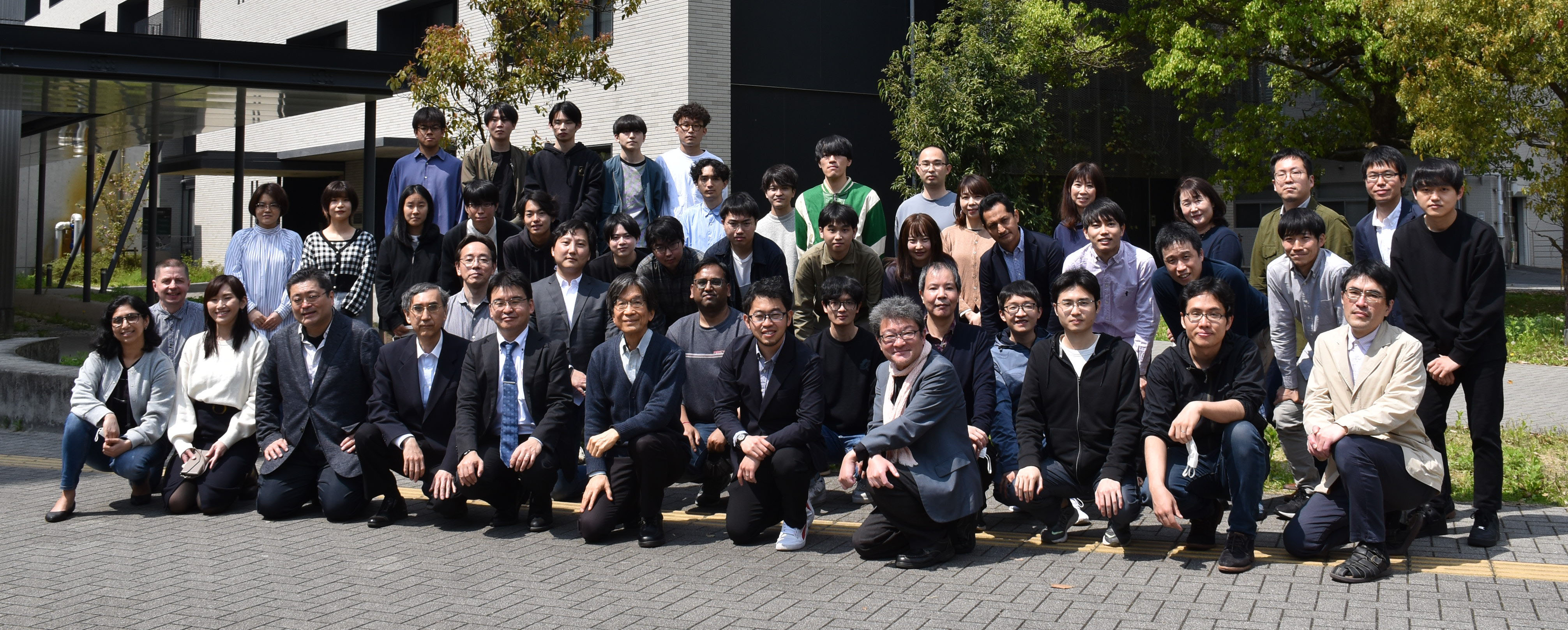Division for Integrated Studies
To the website of Division for Integrated Studies
The solar-terrestrial environment is a complex system that consists of nonlinear, non-equilibrium, and multi-scale interacting processes.
The research activities in the Integrated Studies Division have the goals of understanding the mechanisms as well as predicting the dynamics of various phenomena in the solar-terrestrial environment through data analyses and modeling studies.
Snapshot of the division members
 |
 |
|
Solar research with the collaboration between satellite/ground-based observations and computer simulation/modeling. |
Conceptual image of geospace research with satellite observations, ground-based observations and computer simulations. The ERG satellite will be launched in 2016. |
The Earth’s neutral atmosphere, as well as plasmas in the ionosphere and the magnetosphere comprise geospace, and are affected in many complex ways by solar activity. In order to reach a quantitative understanding of the global behavior of the solar-terrestrial system, it is essential to treat the solar wind-magnetosphere-ionosphere-thermosphere-neutral atmosphere system in its entirety.
The physical processes occurring throughout geospace are intrinsically nonlinear, characteristic of a basically unstable system. In an effort to understand this fundamental property of the overall solar-terrestrial system, the research carried out in the Integrated Studies Division adopts the following two major approaches:
(1) Interactive studies to integrate and facilitate comprehension of the vast array of complex, multi-faceted observations made at various times at different locations in the geospace environment. “Interactive” here implies interrelationships in many respects, such as those between observations and theories, and between spacecraft and ground-based observations.
(2) Computer simulations and modeling which demonstrate how one can reproduce and predict the important characteristic behavior of geospace established from observations.
Related projects
The Integrated Studies Division participates in various projects collaborated with international/domestic universities/institutes as follows.
Geospace Environment Modeling System for Integrated Studies (GEMSIS)
Hinode Science Center at Nagoya
ERG Science Center(operated with JAXA/ISAS)
International Consortium for the Continued Operation of Nobeyama Radioheliograph (ICCON)
More information is found at the following HP.



